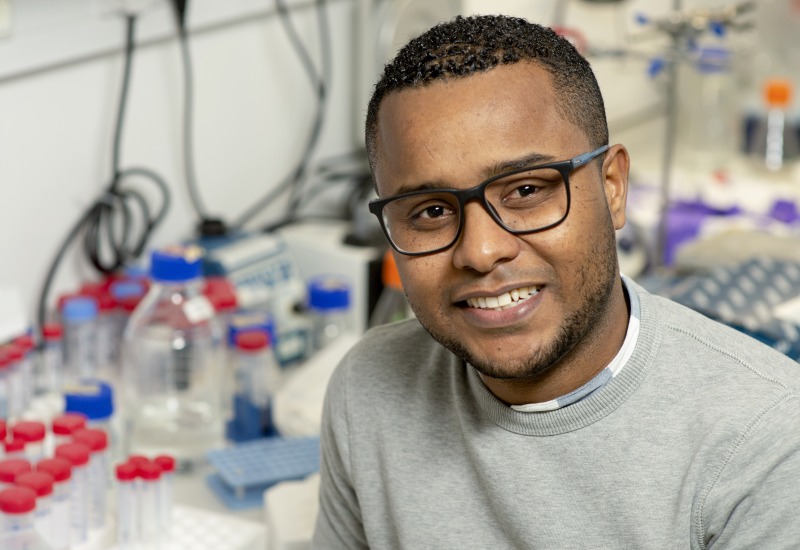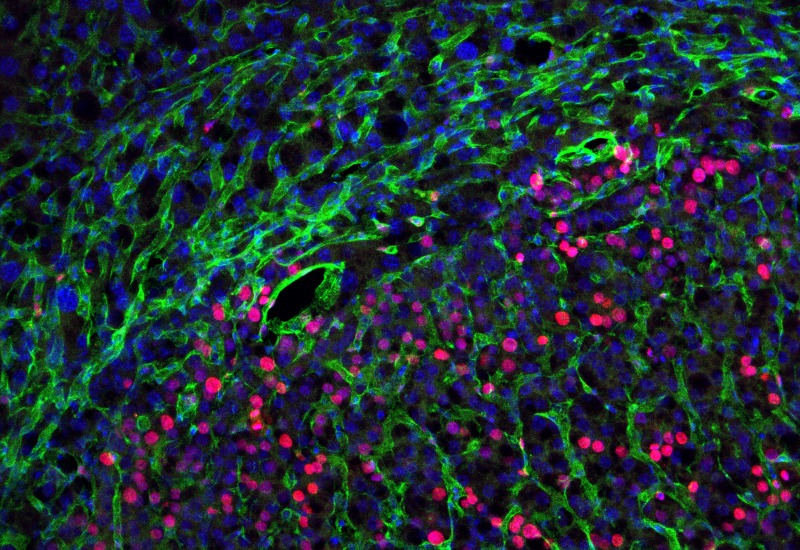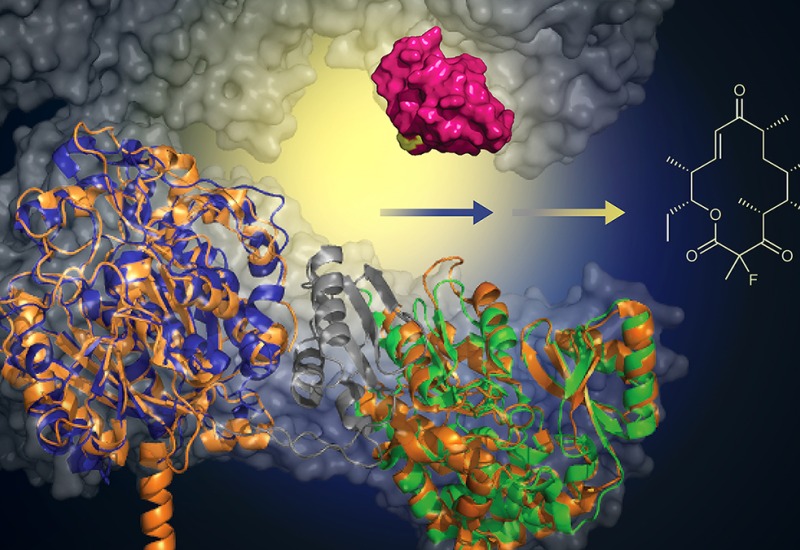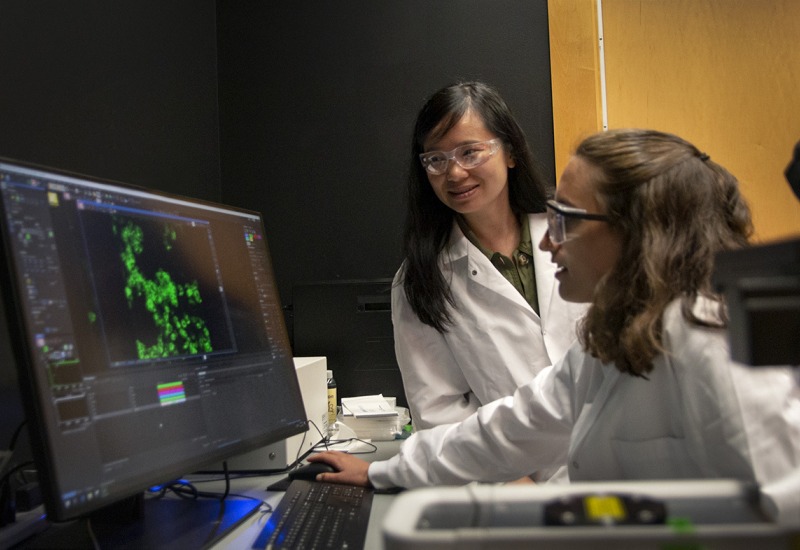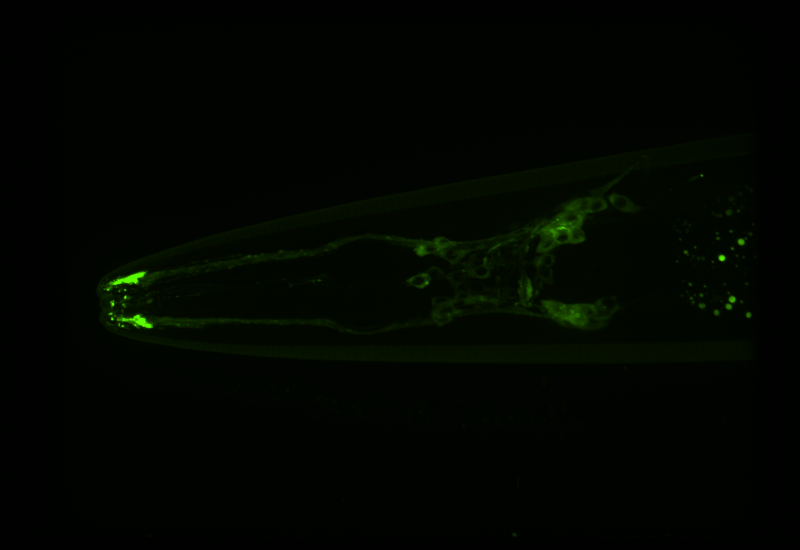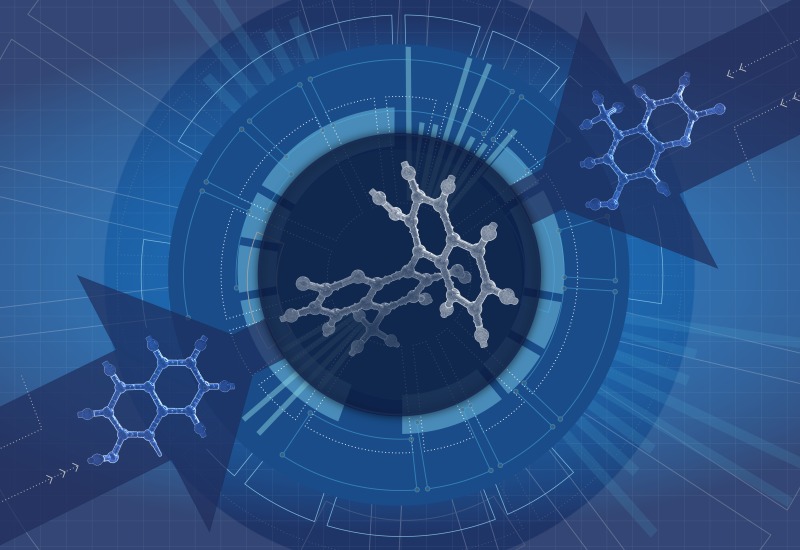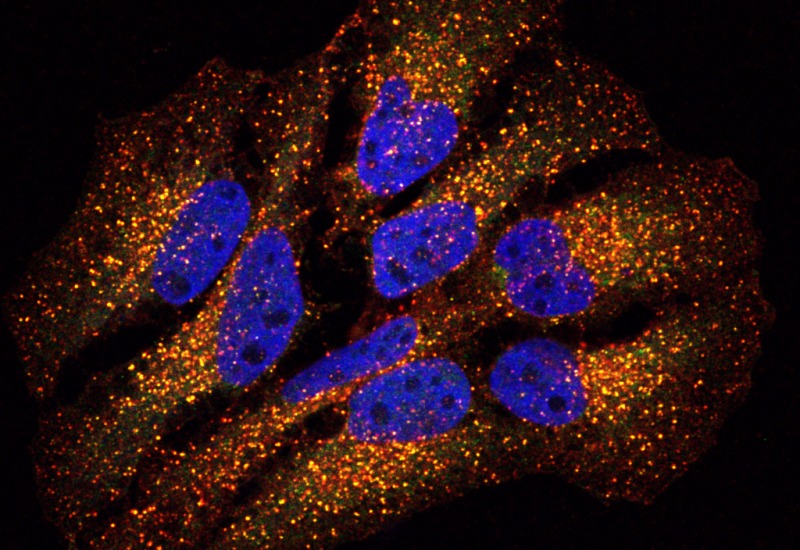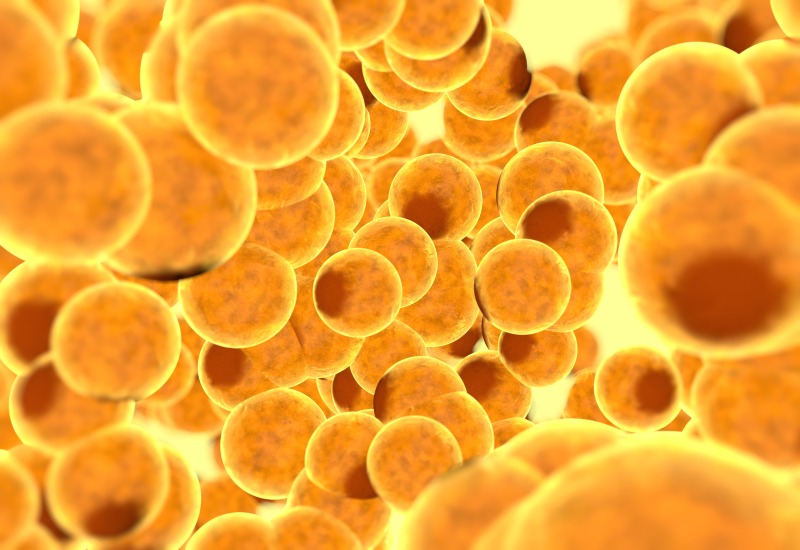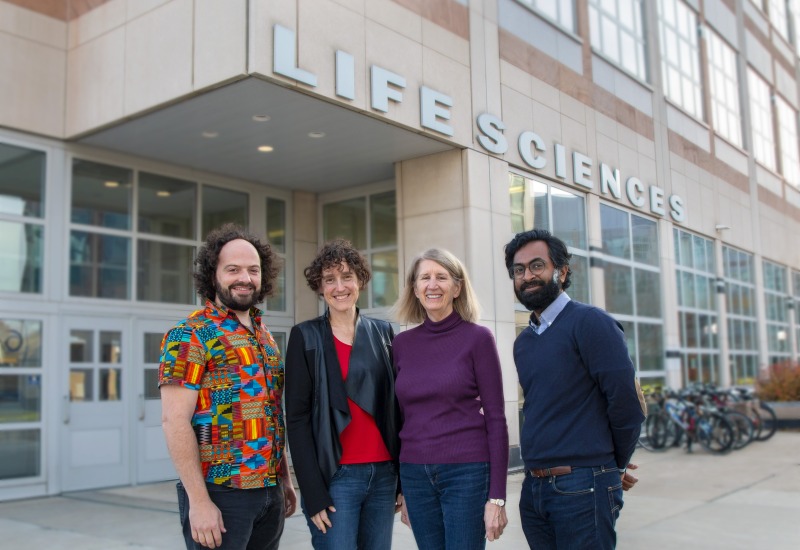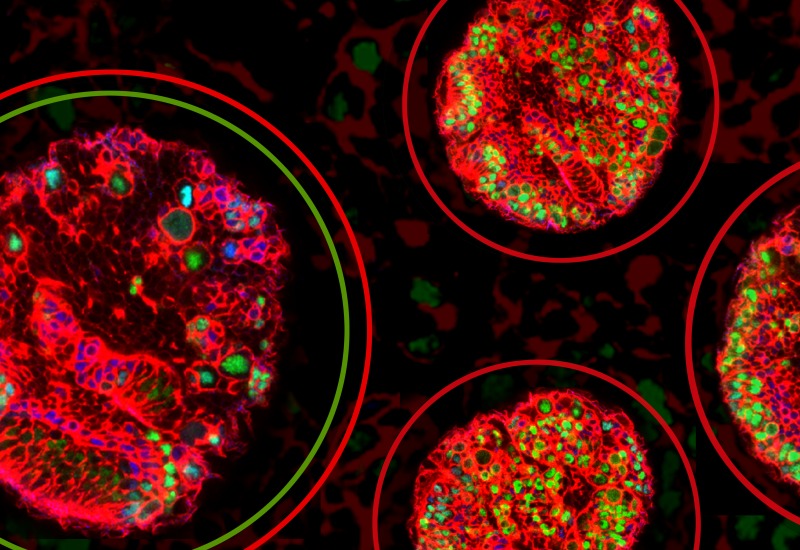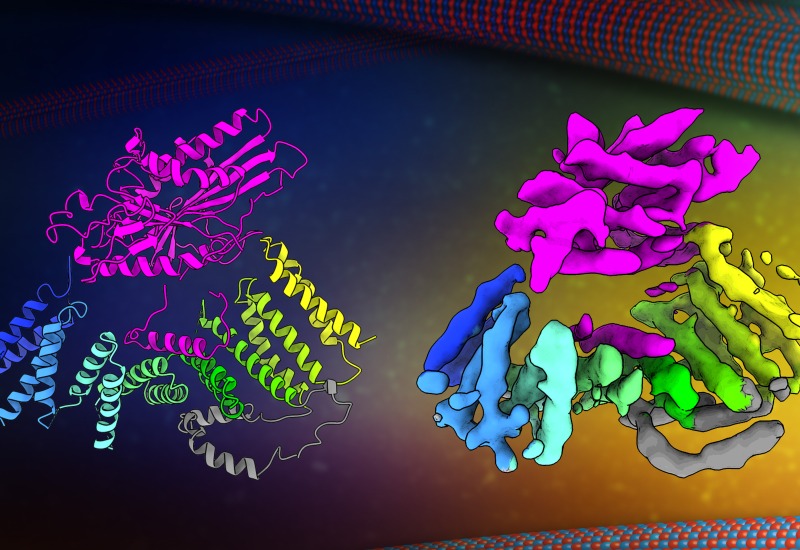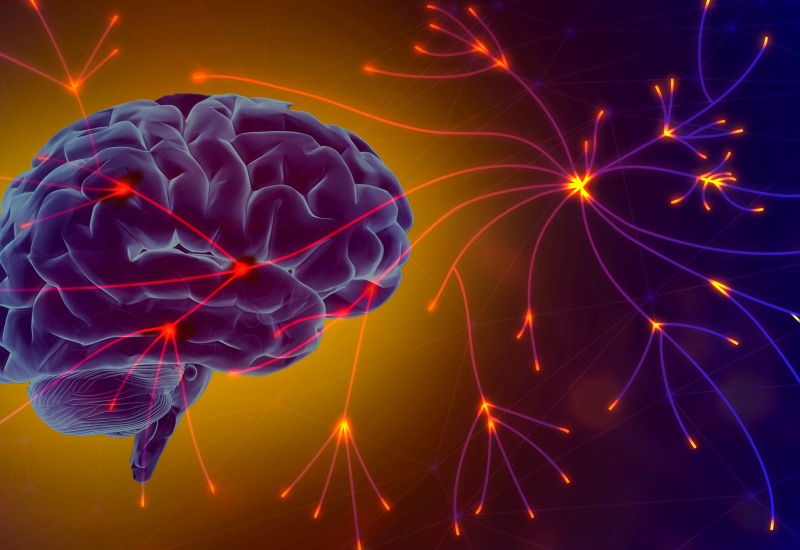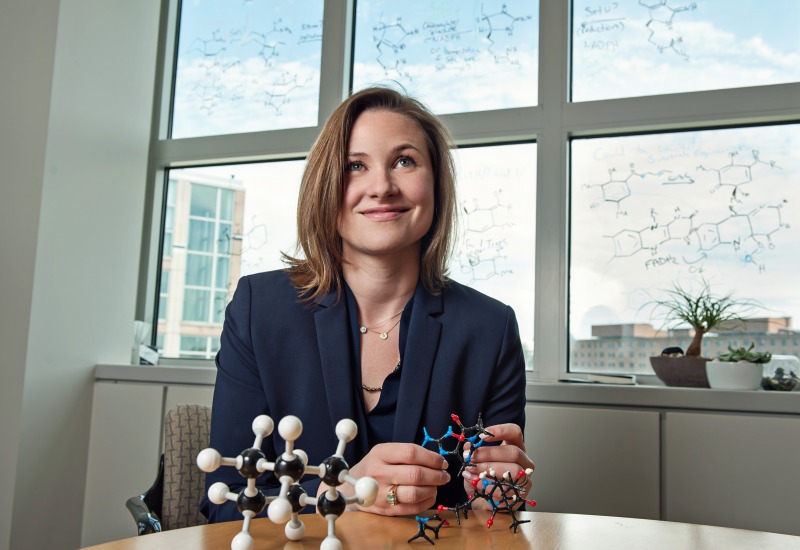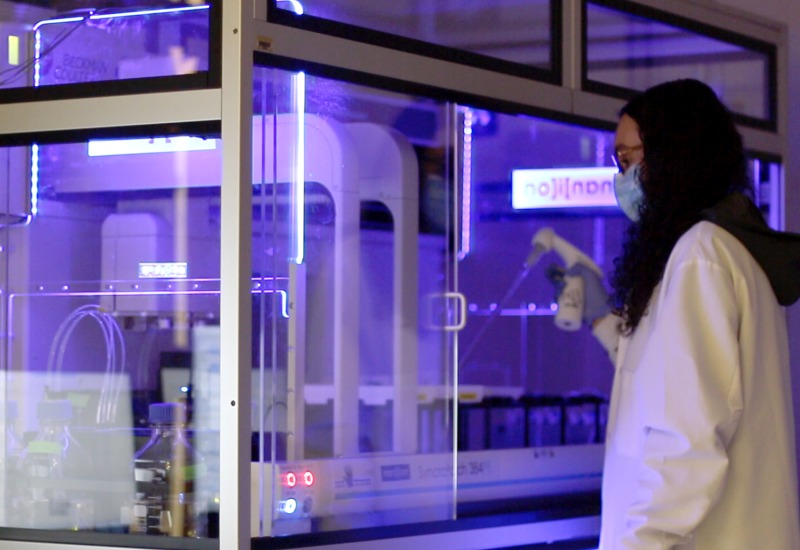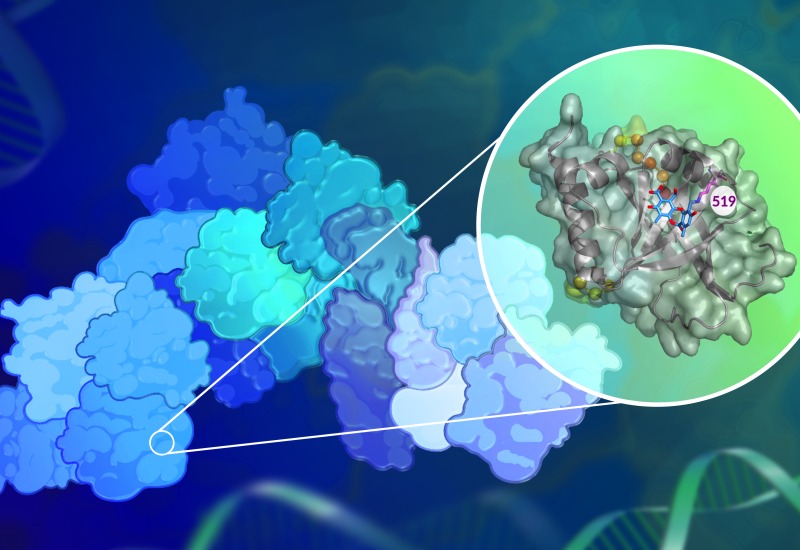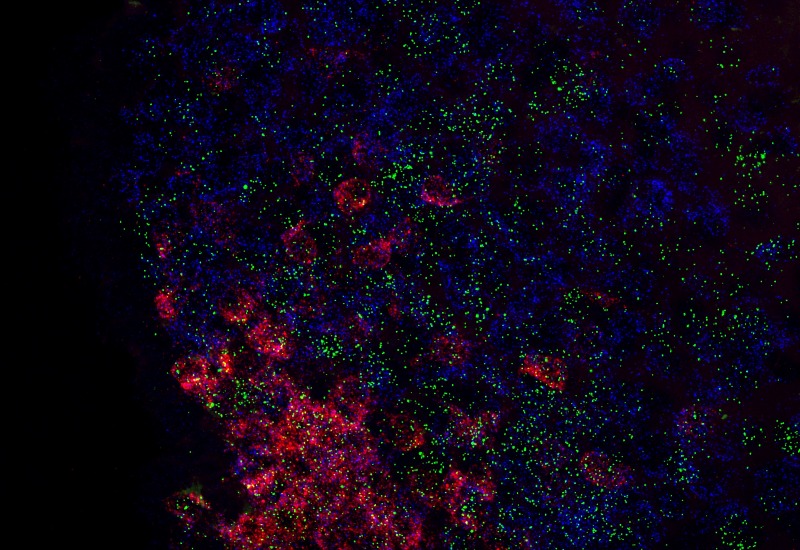Meet the new faculty who are expanding LSI's footprint across campus
This fall, for the first time, the LSI is expanding its reach beyond the walls of Mary Sue Coleman Hall with the addition of two new faculty members. Learn how Chelsey Spriggs, Ph.D., and Jay Brito Querido, Ph.D., will advance the LSI's campuswide impact.
She found her path to science. Now she wants to help others do the same.
Five questions with Assistant Professor Chelsey Spriggs
Why this scientist thinks RNA is ‘much more fun’ than DNA
Five questions with Assistant Professor Jay Brito Querido
New endowed professorship at the Life Sciences Institute supports international leader in the field of structural biology
Janet Smith has been named the Rita Willis Professor of the Life Sciences, representing the first appointment to an endowed professorship at the LSI.
Researchers identify a hormone from fat cells that reprogram the liver microenvironment and restrain tumor growth in mice
A hormone secreted by fat cells can restrain the growth of liver tumors in mice, according to a new study from the LSI. The findings offer a proof-of-concept for developing therapies against the most common form of liver cancer.
Scientists develop greener, more efficient method for producing next-generation antibiotics
Researchers have developed a method for altering one class of antibiotics, using microscopic organisms that produce these compounds naturally. The findings could lead to more efficient production of antibiotics that are effective against drug-resistant bacteria.
At the LSI, philanthropy is funding the foundation of innovative research: Our students
LSI Assistant Professor Wenjing Wang discusses the critical importance of supporting graduate students in the lab, and how philanthropic programs at the LSI are helping her students, and her entire research program, to thrive.
Voices of the LSI: Looking back to move forward — Lessons from DEI 1.0
"Voices of the LSI" is a quarterly column on the LSI’s work to cultivate a diverse, equitable and inclusive climate. This quarter, staff member Natalie Bartolacci, one of the institute's two DEI leads, reflects on what the LSI accomplished during its five-year "DEI 1.0" strategic effort and what lessons we can take into the next phase of our work to advance diversity, equity and inclusion.
LSI faculty member explores potential role of RNA in Huntington’s disease, with a philanthropic award
Researchers are pursuing a new potential culprit underlying Huntington’s disease, with an award from the Klatskin-Sutker Discovery Fund.
Roundworms offer new insights into Bardet-Biedl syndrome
Scientists have identified a new role for a protein complex at the center of a human genetic disorder called Bardet-Biedl syndrome.
Voices of the LSI: What I learn when I listen to my trainees
"Voices of the LSI" is a quarterly column on the LSI’s work to cultivate a diverse, equitable and inclusive climate. This quarter, LSI Professor Bing Ye, Ph.D., considers scientific leaders' role in societal change and describes how trainees in his lab have helped expand his education and actions to advance diversity, equity and inclusion.
Proteins found in nature can become master builders of complex chemical compounds
Researchers have developed an efficient, greener strategy for constructing a common building block of many indispensable medicines and materials, using tools found in nature and sharpened in yeast.
Research Highlight: Scientists uncover unexpected function for an obscure enzyme, hinting at broader roles in multiple human disorders
An obscure enzyme that normally operates deep within cells is also playing an unexpected role close to the cell surface—and is even required for cell migration—according to new research from the Life Sciences Institute.
New research uncovers a path to lowering obesity in mice by increasing the effects of a key weight-regulating hormone
A new study led by the LSI demonstrates that blocking the activity of an enzyme inside fat cells can decrease obesity and related health disorders in mice.
Research Highlight: Scientists determine how one protein helps ‘reopen’ closed-off genes to regulate stem cell development
A team of scientists has identified a key player that drives both embryonic and neuronal stem cell fate, and demonstrated that this process must be precisely regulated to establish the developmental program in both embryo and neuronal tissues.
Voices of the LSI: Moving forward after crisis
"Voices of the LSI" is a quarterly column on the LSI’s work to cultivate a diverse, equitable and inclusive climate. In this column, Stephen Joy, Ph.D., reflects on his recent journey to share — and learn more about — his Japanese American family history and the challenges they faced during and after World War II.
Research Highlight: New study clarifies how one protein helps maintain a healthy cellular supply chain
A new study has uncovered unexpected details about a key regulator kinesins, the molecular 'delivery trucks' that are essential for maintaining a healthy cellular supply chain.
Protein in the brain uses energy status to influence maturation, body size, new research shows
Scientists have identified how a protein in the brain uses information about the body’s energy balance to regulate growth rate and the onset of puberty in children.
U-M Chemistry Professor Chosen for Arthur C. Cope Scholar Award
University of Michigan faculty member Alison Narayan has received the American Chemical Society’s Arthur C. Cope Scholar Award for excellence in organic chemistry.
Earless worms ‘listen’ through their skin
A common model species can sense sound waves without ears, providing a new tool for studying auditory sensation.
Philanthropic support funds two LSI research projects with the potential to impact human health
Two new research projects are moving forward at the U-M Life Sciences Institute, with support from philanthropic funds established specifically to high-risk, high-reward research.
Voices of the LSI: Why we collaborate to build an inclusive academy — Work in action at the LSI
A quarterly column on the LSI’s work to cultivate a diverse, equitable and inclusive climate
Chemical compound produced in nature effectively targets ‘undruggable’ proteins, new research finds
Researchers have demonstrated that a natural compound produced by lichens can block the activity of a protein that is central to the gene-activation process. The research, conducted in human-derived breast cancer cells, points to this protein as potential therapeutic target.
Scientists find new point of access for targeting eating disorders and obesity
Scientists have identified a protein called the melanocortin 3 receptor as a potential drug target for treating obesity and eating disorders such as anorexia nervosa.





